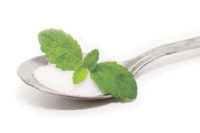When the world’s largest cocoa and chocolate processing company unveiled five reduced sugar recipes at the FiE show in Frankfurt, Germany last year, it certainly underscored the global scrutiny consumers have regarding sugar intake.
According to a 2016 Canadean consumer survey on ethical well-being, 49 percent of global consumers are trying to limit their sugar intake. Another 23 percent indicated that they are trying to eat a moderate amount of sugar while 14 percent said they are avoiding it entirely.
“Nowadays, consumers want to enjoy food without feeling guilty and without compromising on taste,” says Bas Smit, global and EMEA marketing director, Barry Callebaut. “It is all about healthy indulgence. This trend is spreading through Europe and the world. Years of research at Barry Callebaut have resulted in relevant solutions for our customers to satisfy the consumer’s needs.”
The company’s five “sugar solutions” encompassed the following: sugar reduction by 30 percent using a dietary fiber; removing added sugar by adding maltitol; a no-added sugar recipe using stevia as well as inulin, a chicory root fiber; a sugar-free option that combines maltitol and stevia; and a gradual sugar reduction attaining a 10 to 20 percent lower sugar level.
“Since 2007, we have been working on chocolate reformulation,” says Leen Allegaert, head of Barry Callebaut’s Wholesome Choice innovation program. “Throughout the years, we have built a proven track record in sugar reduction. We developed a toolbox of sugar substituting technologies that is ready for customer-specific developments, as well as a complete range of chocolate and filling recipes that are either reduced in sugar or free of added sugar.”
There are, of course, plenty of alternative sweeteners available for confectioners to use. Those alternatives are garnering additional scrutiny, not only from consumers, but by government agencies. In fact, in early December 2017, the World Health Organization released the report, “Incentives and disincentives for reducing sugar in manufactured foods: An exploratory supply chain analysis,” that focuses on a range of proposals governments could take to encourage manufacturers to shift away from using sugar, “the gold standard” in sweetening processed foods.
Of course, as a Sensus technical paper on healthy and tasty chocolate explains, confectioners have turned to sugar not only for sweetness, but for many of its functional properties: a bulking agent, texture modifier, mouthfeel modifier, flavor enhancer and preservative.
Then there’s the energy contribution; sugar serves as a source of energy, providing 394 kcal/100 gram of refined sugar.
“When used in chocolate — typically in the range of 35-50 percent — sugar confers multiple functional properties on the chocolate including sweetness, particle size distribution and mouthfeel,” Sensus explains. “During the processing of chocolate, all components are mixed, refined and conched to attain desired rheological and flavor properties. After this, tempering, cooling and storage are important for the final product texture and melting behavior. Sucrose is added to promote sweetness in chocolate but also affects other flavors. As a result, those replacing sucrose in their recipe must keep all these factors in mind to develop a tasty chocolate.”
There are, however, as mentioned earlier, alternatives. Take, for example, chicory root. Sensus, which is global specialist in chicory root fiber, manufactures Frutafit inulin and Frutalose oligofructose, both of which make a good sugar substitute in a wide range of food products, including confectionery.
Sensus extracts inulin from the chicory root (Cichorium intybus L.). Inulin belongs to the group of fructans, a naturally occurring storage carbohydrate present in numerous plants, the company explains. In addition, inulin and oligofructose are classified as ingredients, not additives, and have no E-numbers, it points out.
“Inulin from chicory contains fructose units (DP 2-60) mostly with a terminal glucose molecule,” Sensus says. “The low-molecular weight fractions (DP 2-10) of inulin are also known as oligofructose, fructo-oligosaccharides or FOS. They are produced from inulin by partial enzymatic hydrolysis. The characteristic of inulin [is that] as a non-digestible carbohydrate from plants that reaches the colon largely intact and evokes physiological functions, qualified as soluble dietary fibers. They also belong to the sub-category of soluble fiber.”
In order to claim “reduced sugar,” manufacturers must remove at least 30 percent of the sugar from their product, Sensus points out. With inulin, confectioners can easily accomplish this because the powders replace the sugar on a 1:1 basis, it says. Inulin makes it possible to produce chocolate with less sugar because it behaves similarly to sucrose; specifically, no process changes are necessary. The sugar-reduced chocolate delivers a pleasing taste comparable to the full-sugar version. Plus, it’s lower in calories.
Then there’s stevia, which has grown in popularity since its entry as a natural sweetener several years ago. And here, too, the product, continues to undergo refinement and development. Icon Foods (formerly Steviva Ingredients) just unveiled KetoseSweet, a blend of D-Allulose, monk fruit and stevia.
Naturally occurring in wheat, figs, raisins and jackfruit, allulose is a low-energy monosaccharide sugar, the company explains. It is a C-3 epimer of fructose, and has the same molecular formula as fructose and glucose.
But unlike fructose and glucose, allulose is not rapidly digested and absorbed, Icon Foods says. It passes through the body without being metabolized. Because D-Allulose does not negatively impact blood sugar levels, the FDA is being lobbied to consider allowing D-Allulose to be labeled separately, rather than an added sugar under the impending labeling guidelines. It behaves similarly to erythritol. It does not have a laxative effect.
Moreover, non-digestible carbohydrates are associated with body weight reduction. Compared to sugar’s 4 calories per gram, allulose has only 0.2 calories per gram, the company says. Even though it is only 70 percent as sweet, it has the same temporal profile as sugar. Plus, it provides the expected mouthfeel that sugar imparts, leading to a more satisfying flavor without requiring the addition of bulking ingredients.
Considered GRAS (Generally Recognized as Safe) by FDA (Food and Drug Administration), allulose may be used as a sole source of sweetness or in combination with other sweeteners, Icon Foods adds. Allulose exhibits a synergistic effect with other sweeteners, so optimal flavor development and cost benefits are realized when formulating reduced, low or calorie-free foods.
Although it is comparable to erythritol in calorie delivery, it does not present the cooling effect of erythritol, making it a more pleasing choice in many applications. In place of erythritol, it may be used with high intensity sweeteners to add sweetness and bulk. Or, it may be used to reduce added sugar levels while maintaining sensory and functional attributes.
FDA allows its use in a wide range of food products, including chewing gum and hard and soft candies.
Another allulose sweetener that’s gaining acceptance is Astraea Allulose. As Koji Sasaki, manager of snacks and candies R&D at Matsutani Chemical Industry Co. Ltd., explains, Astraea Allulose is categorized as a rare sugar monosaccharide — the simplest form of sugar and one of approximately 50 types that exist in small quantities in nature and as components of food. Its chemical composition is the same as glucose and fructose of C6H12O6.
Astraea is created using a process known as “Izumoring,” coined by Professor Ken Izumori at Kagawa University in Japan, Sasaki says.
“Izumori found an enzyme to make the allulose and determined how to use it for different applications using his research of more than 40 years,” he explains. “When a monosaccharide reacts with a microbial enzyme, it causes the sugar to change from one type to another. A wide variety of high quality rare sugars can be made this way.”
Astraea is the brand name of his [Izumori] allulose, and it’s the first commercially available brand for food use in the world, he adds. “Before Professor Izumori, scientists knew such types of sugar existed in nature, but it was hard to find and its cost of production was so high ($400 per gram) that no one was interested in conducting research or developing it.”
One of the benefits associated with Astraea Allulose is that the sweetener can act as a bulking agent and could replicate sugar’s function like adding body, browning and crystal appearance, Sasaki says.
“On the other hand, Astraea Allulose is not as sweet as sugar,” he explains. “It has about 70 percent of sucrose sweetness, and 100 percent replacement will lead to less sweetness compared to its original form. We see many of our customers use high potency sweeteners with Astraea to boost its sweetness.”
When it comes to confectionery products, Sasaki says Astraea Allulose can be used as a sugar replacement for hard candy and chewing gum at 50 percent.
“Any products with sucrose would be a good candidate,” he says. “Hard candy and soft candy would be a good field to try with a ‘sucrose free’ application. Chocolate is another application where you can formulate a ‘reduced calorie’ version of its original without sacrificing its original taste and texture.”
Not only does Astraea reduce calories in finished products, it provides physiological benefits such as helping to regulate blood sugar levels and lowering lipid accumulation in the body. As of today, there are more than 2,000 SKUs which use Matsutani’s product in Japan.
And finally, there’s one other development. Barry Callebaut just announced that its Van Leer brand in North America is offering a naturally sweetened couverture dubbed Niu that uses coconut sugar. According to the company, Niu contains 65% dark cacao, offering a strong cocoa flavor to balance the coconut.
“It’s is the perfect chocolate for clean-label, upscale and globally-inspired formulations” and “offers product developers a clean solution for moulding and enrobing, all with a healthy halo,” the company’s press release states. Recent research by the company affirms a positive connotation for coconut by consumers. Two-thirds of global consumers think coconut has a positive impact on health, Barry Callebaut points out, while 58 percent view coconut oil positively. As a result, the cocoa and chocolate processor believes coconut sugar will also have a halo effect.
Mark Adriaenssens, v.p. of r&d – Americas for Barry Callebaut, emphasizes that coconut sugar “…is generally recognized as one of the best sugars and most accepted sugars.” Moreover, it produces “…a unique tasting chocolate. There is no coconut flavor. Coconut sugar does come from the sap of the trunk of the tree and does not at all taste as coconut.”
Given that it doesn’t taste at all like coconut, Adriaenssens says there aren’t any taste issues with consumers who don’t like coconut. However, it does not taste like regular sugar.
Rather, it’s “…. very particular and unique. Once people taste it they love it in general,” he says.
Although there are no issues regarding process — it has similar viscosity parameters and is also made with the same cocoa ingredient (so same fat) as regular chocolates — it is significantly more expensive than regular sugar because it is organic and very labor-intensive to harvest. Hence, the Niu couverture addressed two growth chocolate segments: premium and better-for-you.
No doubt consumers will continue to see more sugar-reduced and no-sugar confectionery items crop up during the coming years. The successful launches will be those that mimic their gold standard, sugar-based counterparts in both taste and texture.











